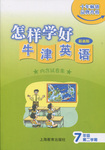题目内容
The trees arrived by post, a half – open parcel. They were him and straight, rather like arrows but with shiny leaves at one end and muddy roots at the other. Terry and his father took them down to the garden and planted them in their prepared places. Terry had great hopes of the middle tree, now set in the holy spot where Herry, his cat, run over, had been laid to rest a year before. The nine trees made an avenue down one side of the garden, where there was already a fifteen – foot stone wall between the garden and the backyards of the Jenkins Street houses.
“Why do we want a row of trees as well as a wall?” Terry asked his father. His father said, “For privacy. These trees grow very thickly.”
His father’s love of privacy often puzzled Terry, who was not one to keep himself to himself, but he could see part of the point here. The houses in Jenkins Street were on higher ground. His friend Leslie lived at number twelve, and he had only to stand on a box to see right over the wall.
“Will the trees grow higher than the wall?” Terry asked then. “Oh yes, twice as high if not more. It’ll take a few years but they’ll grow.”
So they were going to have nine trees thirty feet tall, to keep them from being overlooked. Terry wondered why this was so desirable. He said, “Our garden is very pretty. Why can’t we let the people over the wall see it? That wouldn’t be showing off, would it?”
“No, I don’t think it would be,” his father said. “Yet some people might feel a bit less happy if they can always see a good thing isn’t theirs. We don’t want to be the cause of any jealousy if we can help it.” This consideration for other people’s feelings must be a grown-up thing. Terry thought. It was not his idea of how to run things. He said, “It seems a lot of trouble to go to stop people being jealous of us.”
His father looked at him. “It isn’t much trouble, Terry,” he said. “These trees will grow without help from us. They’ll be beautiful. And you can already hear them whispering to us in the wind.”
1.Where were the trees going to be planted?
A.In front of the wall.
B.In the backyards of the Jenkins Street house.
C.In the middle of their garden.
D.In front of their house.
2.Terry called a part of the garden “the holy spot” because .
A.his cat was buried there
B.Henry had been run over there
C.Terry’s own tree was planted there
D.it was the middle of the garden
3.The underlined sentence, “… he could see part of the point here” (in Paragraph 3) means “ ”.
A.Terry could see part of the yard from the garden
B.Terry could see part of the house in Jenkins Street
C.Terry didn’t understand the meaning of “privacy”
D.Terry understood partially his father’s consideration for privacy
4.What didn’t Terry agree with?
A.Letting their neighbors what happened in the garden.
B.The way their neighbors treat his family
C.His father’s concern for people’s feelings
D.His father’s effort of hiding the trees in the garden
1.A
2.A
3.D
4.C

 怎样学好牛津英语系列答案
怎样学好牛津英语系列答案